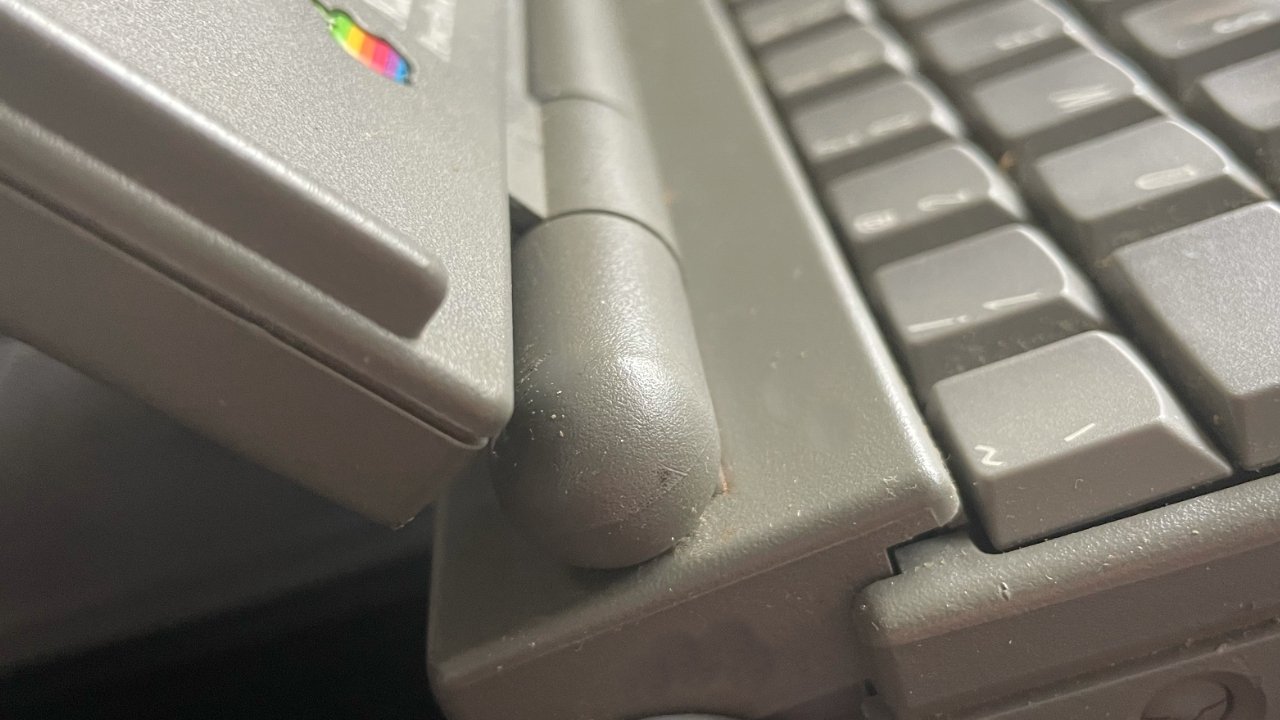Apple wants MacBook Pro and foldable iPhone lids to move smoothly when you open them, but then be rigidly strong supports for the display -- and automatically adjust to what you need.

We've already come a very long way since the PowerBook 100 hinge
Apple has applied for patents concerning every imaginable use of hinges -- from smart rings, through iPad keyboards, and even on to the "Apple Car." It also has a huge number of patents regarding hinges on MacBook Pro, but now it has a new one to do specifically with rigidity and flexibility on larger devices, like laptops or potentially an "iPhone fold."
On the surface, the newly-granted patent "Electronic devices with adjustable hinges," covers much the same ground as many of Apple's previous patents and patent applications regarding MacBook Pro hinges. However, among the descriptions of what hinges do, and how MacBook Pro has a clamshell-like separation of screen and main computer, there is also new detail about adjusting flexibility.
"Control circuitry in the electronic device may adjust an electrically adjustable device to control resistance of the hinge to bending about the hinge axis," says the patent. "During operation, the control circuitry can adjust the resistance of the hinge to bending based on this data from the sensor."
The sensor mentioned, or possibly multiple different sensors, "may gather information such as user touch input, force measurements, measurements related to movement of the housing, information on the position of the housing," and so on. Having gathered all of this data, the MacBook Pro or iPhone could determine what action the user wants to take.
"For example, the control circuitry can dynamically adjust hinge resistance to implement a soft-close feature for the housing," continues the patent, "to lock and unlock the housing, to hold housing portions in desired positions relative to each other, and/or to perform other functions related to bending of the hinge or other movements within a device."
Detail from the patent showing one bendable hinge, either for a MacBook Pro, or a folding iPhone
Apple has previously proposed bendable MacBook Pro models, and this patent could be used as part of such a design. It avoids being too specific about designs, but multiple images in the patent show a regular hinge replaced by a smoother, bending one.
"The electrically adjustable device may be an electroactive polymer layer that that adjusts pressure between two sliding layers of material and thereby adjusts sliding friction between the two layers," says the patent, "may be a magnetorheological device with an adjustable stiffness, may be an adjustable component formed from a shape memory material, or may be any other electrically adjustable device."
The patent is credited to Shravan Bharadwaj, whose previous work includes a design for iPhone cases that automatically brace themselves for impact when dropped.
Stay on top of all Apple news right from your HomePod. Say, "Hey, Siri, play AppleInsider," and you'll get latest AppleInsider Podcast. Or ask your HomePod mini for "AppleInsider Daily" instead and you'll hear a fast update direct from our news team. And, if you're interested in Apple-centric home automation, say "Hey, Siri, play HomeKit Insider," and you'll be listening to our newest specialized podcast in moments.